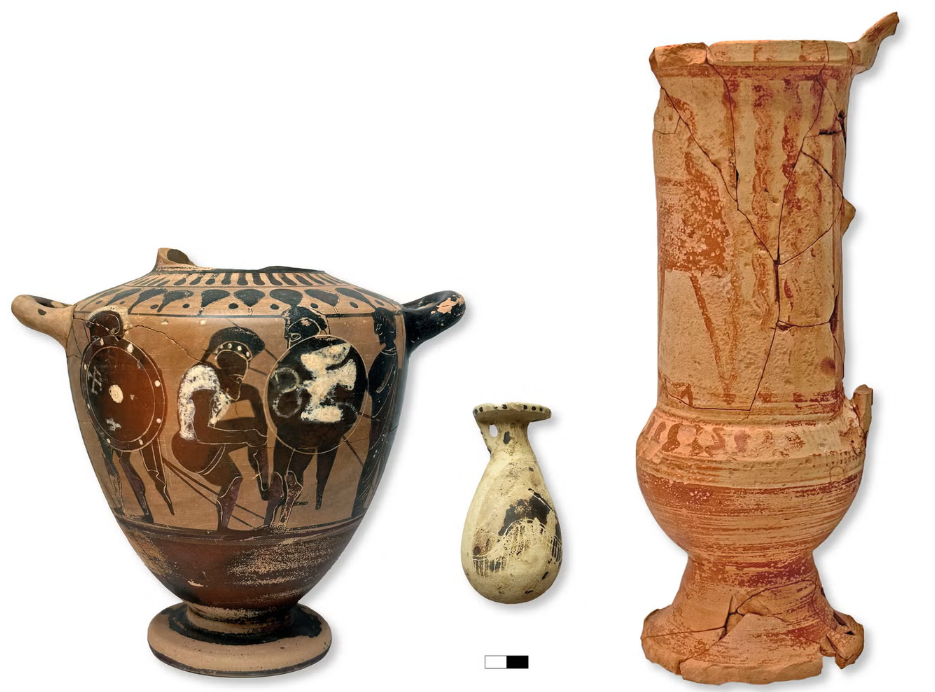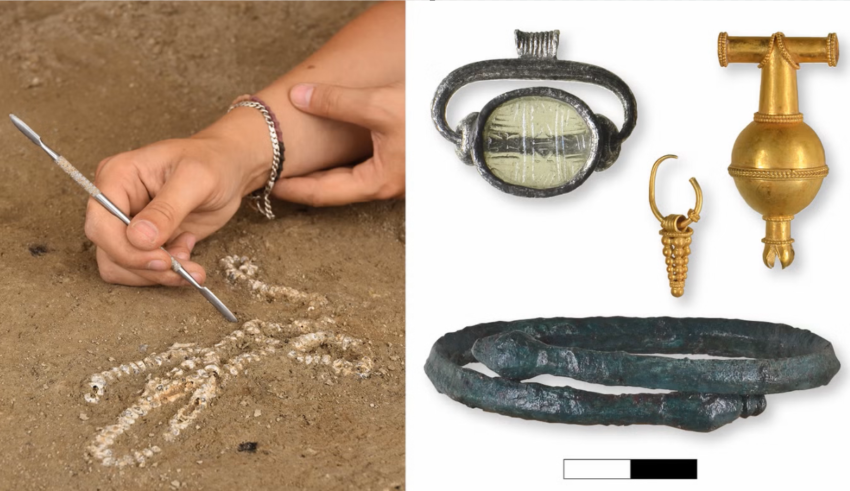A 2000 year old Greek temple filled with gold, silver, amber and jewelry has been unearthed in Greece.
An area filled with gold, silver and amber jewelry and thought to be a temple was discovered on the Greek island of Evia. The 100 meter structure, dating back to the 7th century BC, was uncovered in 2023 by a team of 50 researchers.
Corinthian alabaster, attic vases, locally made ritual prokos and jewelry made of precious materials such as coral were recovered.
The excavation of the temple also unearthed rich offerings. A number of structures were also discovered, probably used as altars by the worshippers. A horseshoe-shaped altar was the most original of the designs, and thick layers of ash, rich in charred bones, indicated continuous use.
“The possibility that some of these predate the temple cannot be ruled out,” the Greek ministry says, adding that the first level of use of the horseshoe altar yielded pottery dating to the late 8th century BC.



In some of the oldest sections, researchers discovered Geometric bronze figurines representing bulls and rams.
The site in general dates back even further than the temple itself, with test sections showing structural remains dating back to the 9th century BC. “Although exploration of the oldest of these layers has only just begun, initial discoveries suggest that the roots of the cult date back to centuries after the end of the Mycenaean period,” the statement said.
In 2015, a 3500 year old warrior’s tomb was discovered in the Palace of Nestor in Greece’s Peloponnese, yielding solid gold rings, intricately crafted swords, ivory combs with fine teeth, silver vases and more than a thousand precious stone beads.
The ministry described it as “the most important treasure discovered in continental Greece in 65 years”. We think that the treasure discovered now could be seen as a rival.
